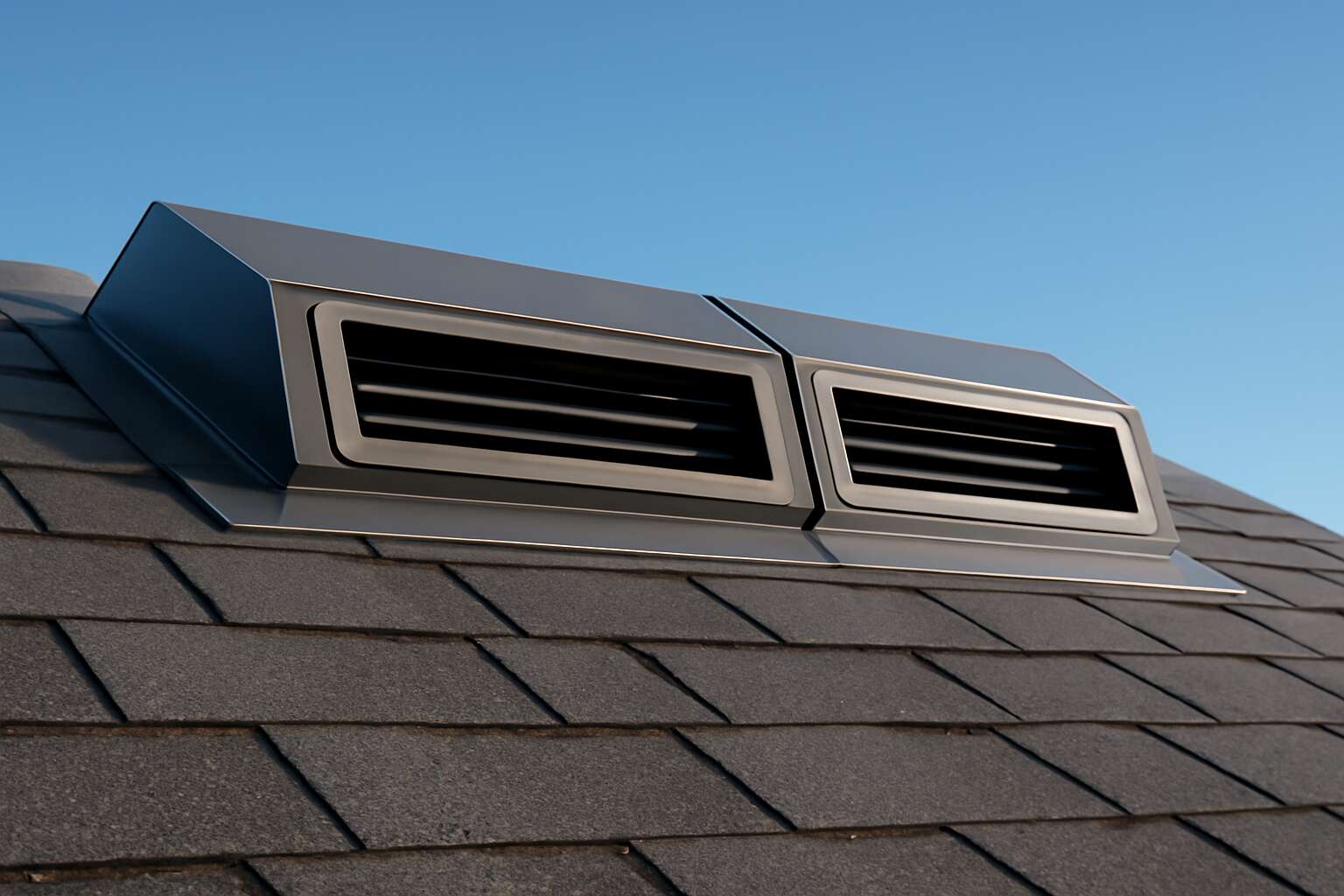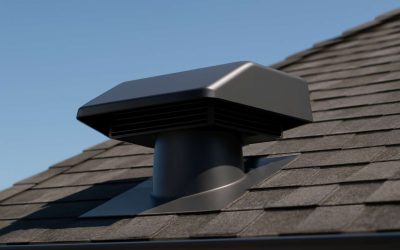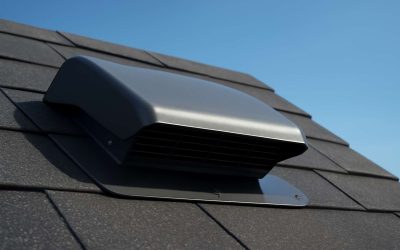Understanding Roof Ventilation Systems
Types of Roof Vents
Understanding roof ventilation systems is like decoding the secret language of a well-ventilated home—once you get it, you’ll wonder how you ever lived without it. A properly designed roof vent system not only keeps your attic from turning into a sauna but also extends the lifespan of your roof by preventing moisture buildup and mold growth.
When it comes to types of roof vents, familiarity is key—there’s more than just the humble soffit vent. From ridge vents that run along the peak of your roof to turbine vents spinning like mini windmills, each type plays a vital role.
- Static vents, which quietly sit and do their job without fuss
- Powered vents, equipped with fans to boost airflow even on still days
- Box vents, often paired with other types for a comprehensive roof vent system
Choosing the right roof vent system depends on your climate, roof design, and personal preference—because why settle for less when your roof deserves top-notch airflow?
Components of a Vent System
Imagine a symphony of airflow, where each component of your roof vent system plays a vital part in maintaining the harmony of your home’s interior environment. The heart of this orchestration lies in the carefully designed components that facilitate optimal ventilation, ensuring your attic remains dry and your roof stays strong. Without these essential elements, moisture and heat can silently conspire, causing long-term damage that’s costly and disruptive.
Central to the roof vent system are the vents themselves—each with its unique role and personality. From static vents that quietly perform their duty to powered vents that actively boost airflow, every piece contributes to the overall efficiency. Additionally, intake elements like soffit vents work in tandem with exhaust vents, creating a continuous flow of fresh air that sweeps through your attic space.
- Exhaust vents, such as ridge or turbine vents, allow warm, moist air to escape.
- Intake vents, including soffit and box vents, draw in cooler, drier air from outside.
- Fans or powered vents can be integrated into the system for enhanced airflow during still days or extreme weather.
Understanding these components reveals how a well-constructed roof vent system transforms your home into a fortress against the elements—an invisible guardian that works tirelessly, often unnoticed, yet so vital. It’s the secret to preserving your roof’s longevity and ensuring a comfortable, healthy living space beneath.
Importance of Proper Roof Ventilation
In the quiet of rural South Africa, where every sunrise paints stories across the veld, the importance of a well-maintained roof vent system becomes clear. Proper roof ventilation isn’t just about comfort; it’s about safeguarding the very soul of your home. An efficient system ensures that heat and moisture don’t silently build up, causing long-term damage that can weaken your roof and compromise your sanctuary.
Imagine your attic as a living space that breathes—exchanging stale, warm air for fresh, cooler breezes. Without a properly functioning roof vent system, this exchange is hindered, and moisture can settle, leading to mould and decay. A balanced setup of exhaust and intake vents creates a continuous airflow, vital for preserving your home’s integrity in the face of South Africa’s diverse climate. This invisible guardian works tirelessly, quietly defending your family’s comfort and your property’s longevity.
Factors to Consider When Choosing a Roof Vent System
Climate and Weather Conditions
In South Africa’s diverse climate, selecting the right roof vent system is more than just a matter of preference—it’s a strategic decision rooted in environmental realities. Extreme heat, heavy rains, and occasional storms demand a system that adapts seamlessly to fluctuating weather conditions. A poorly chosen vent can lead to moisture buildup, heat retention, and even structural damage over time.
Understanding the climate is paramount. For regions prone to high temperatures, a roof vent system that promotes efficient airflow and heat dissipation is essential. Conversely, areas with frequent rain require vents that prevent water ingress while still providing proper ventilation.
When evaluating options, consider factors like wind speed, humidity levels, and seasonal variations. These elements influence the vent’s design and placement, ensuring reliable performance regardless of weather shifts. After all, your roof vent system should work silently in the background, guarding your home against the unpredictable forces of nature.
Roof Type and Structure
Choosing the right roof vent system isn’t just a matter of picking something shiny and hoping for the best. Your roof’s structure and type play a starring role in ensuring your ventilation system actually works. A flat roof, for example, demands a different approach than a steeply pitched one, because the airflow dynamics and water runoff patterns vary dramatically. Ignoring these nuances can turn your well-ventilated dream into a soggy, overheated nightmare!
To navigate this maze, consider the roof’s material, pitch, and load-bearing capacity. These factors influence not just the design but also the placement of your roof vent system. For instance, a corrugated iron roof might require specific vent types to prevent leaks, while a tiled roof benefits from vents that blend seamlessly with the aesthetic. Remember, a mismatched system is like trying to fit a square peg in a round hole—frustrating and ineffective.
- Assess the roof’s structural integrity
- Match the vent type to the roof material and pitch
- Factor in load-bearing capacity and potential storm impact
By considering these elements, you ensure that your roof vent system performs reliably—regardless of whether it’s blistering heat or heavy rains. Because in South Africa, your roof should be a fortress, quietly working in the background while you enjoy the comfort of your home.
Building Size and Attic Space
The size of your building and attic space are critical factors when selecting a roof vent system. Larger homes or those with expansive attics demand more robust ventilation solutions to prevent heat buildup and moisture issues. Overlooking these elements can lead to inefficiencies, leaving your roof vulnerable to damage and increasing energy costs. In South Africa’s diverse climate, ensuring your roof vent system matches your property’s scale is essential for maintaining a comfortable and durable roofline.
Assessing the attic space helps determine the number and type of vents needed. An undersized vent system can cause stagnant air pockets, while over-ventilating may lead to unnecessary energy loss. For optimal performance, consider:
- The total square footage of the attic
- The height and shape of the building
- The typical weather patterns—hot summers and rainy seasons require adaptive solutions
Remember, a well-matched roof vent system isn’t just about airflow; it’s about creating a protective barrier that withstands South Africa’s unique climate challenges. When the size and attic space are factored in accurately, your roof becomes a fortress—efficient, resilient, and ready for any weather.
Energy Efficiency and Cost
When choosing a roof vent system, energy efficiency isn’t just a buzzword—it’s the difference between a comfortable home and a sauna that no one asked for. South Africa’s scorching summers and rainy winters make selecting a vent system that balances airflow with insulation principles a savvy move. An overly aggressive roof vent system can turn your attic into an energy-draining wind tunnel, while too little ventilation risks moisture buildup and mold.
To get it just right, consider factors like your roof’s orientation, the local climate, and your energy budget. Sometimes, a simple rule of thumb works: for every 300 square feet of attic space, you need one square foot of venting. But in reality, more nuanced considerations—such as the building’s shape and the typical weather—should influence your choice. After all, a roof vent system isn’t just about letting air in; it’s about creating a smart, energy-efficient fortress that withstands South Africa’s unpredictable climate.
Installation and Maintenance of Roof Vent Systems
Installation Best Practices
Installing a roof vent system isn’t a task to be taken lightly. The difference between a poorly installed system and a flawlessly executed one can be the difference between attic longevity and costly repairs. Every detail matters—sealants, flashing, and placement all play a pivotal role in ensuring optimal performance. An effective roof vent system requires meticulous attention to detail, especially when sealing joints to prevent water ingress and air leaks, which can compromise its efficiency over time.
Best practices for installation involve adhering to manufacturer guidelines, but also considering the unique climate conditions of South Africa. Ensuring proper airflow and ventilation is a delicate balance, often achieved through a combination of ridge vents, soffit vents, and static vents. To streamline this process, consider following these key steps:
- Assess the roof’s pitch and structure to determine the ideal vent placement.
- Ensure all penetrations are accurately sealed to prevent leaks and water damage.
- Use high-quality flashing and sealants compatible with local weather conditions for longevity.
Maintenance is equally crucial. Regular inspections can reveal debris buildup or signs of wear, which can hinder airflow. Cleaning vents and replacing any damaged components will keep the roof vent system functioning efficiently, safeguarding your property against the unpredictable South African climate and enhancing energy efficiency over time.
Maintenance Tips
Proper installation and vigilant maintenance of a roof vent system are the silent guardians of structural integrity, especially under South Africa’s capricious climate. A meticulously installed system, with sealed joints and carefully chosen components, not only ensures optimal airflow but also guards against water ingress—a threat lurking in every gust of wind or sudden downpour. Over time, dust, debris, and wear can silently sabotage this delicate equilibrium, reducing efficiency and risking costly repairs.
To safeguard your investment, regular inspections are fundamental. Clearing out dirt and obstructions from vents, along with replacing any compromised sealants, sustains unimpeded airflow. For those keen on precision, consider this process as a layered approach:
- Inspect all vents for debris buildup or damage.
- Ensure flashings are intact and sealed properly.
- Apply weather-resistant sealants where necessary to prevent leaks.
Understanding that climate influences performance, it’s vital to select high-quality materials compatible with South Africa’s diverse weather patterns. When maintained diligently, your roof vent system becomes more than a functional element—it transforms into a resilient shield, quietly working year after year to optimize energy efficiency and protect your home from the unpredictable elements.
Common Issues and Troubleshooting
In the shadowed corners of every sturdy roof, the roof vent system silently guards the sanctity of your home’s interior. Yet, even the most meticulously crafted systems are not immune to the dark whispers of common issues. Over time, debris can conspire to clog vents, obstructing airflow and turning a vital lifeline into a breeding ground for mold and rot. Water ingress, often disguised by the guise of seemingly minor leaks, can ravage the structure from within if the roof vent system’s seals weaken or become compromised.
When troubleshooting these spectral problems, start with a keen inspection. Look for signs of damage or blockages; a simple cleaning can often restore balance. If leaks persist, examine the flashings and sealing materials—these are the guardians against water intrusion. Applying weather-resistant sealants can be the difference between a resilient system and one haunted by persistent leaks.
- Inspect all vents for debris buildup or damage.
- Check flashings for integrity and proper sealing.
- Replace worn or cracked sealants immediately.
Understanding the eerie dance between climate and the roof vent system’s performance is crucial. South Africa’s capricious weather demands robust, weather-resistant materials—an investment in longevity and peace of mind. When these issues are addressed with vigilance, the roof vent system becomes more than a mere component; it transforms into a silent sentinel, guarding your haven against the chaos lurking beyond.
Benefits of Upgrading or Installing a New Roof Vent System
Energy Savings
A well-designed roof vent system does more than just keep the attic cool—it can significantly reduce energy consumption and lower utility bills. By facilitating proper airflow, a new roof vent system prevents heat from building up in the summer months, easing the burden on air conditioning units. This natural airflow helps maintain a stable indoor temperature, which translates to energy savings that can be felt in the pocket and the environment alike.
In addition to the immediate cost benefits, upgrading your roof vent system enhances the overall efficiency of your home’s insulation. When hot air escapes, it prevents the formation of moisture and mold, extending the lifespan of roofing materials. For homeowners looking to optimize their energy use, the choice of a high-quality roof vent system is an investment that pays dividends in comfort and savings over the long haul. Proper ventilation isn’t just about comfort—it’s a strategic move toward sustainable living.
Enhanced Home Comfort
Imagine turning up the thermostat on your home’s comfort without actually dialing down the air conditioning—sounds like magic, right? Well, a high-quality roof vent system makes that possible by transforming your attic from a heat trap into a breezy, well-ventilated space. When hot air escapes effortlessly, it dramatically enhances your home’s overall comfort, even during those scorching South African summers.
Upgrading to a new roof vent system isn’t just about keeping things cool; it’s about creating a sanctuary where heat and humidity don’t dictate your daily life. Proper ventilation helps maintain consistent indoor temperatures, meaning fewer hot flashes from the attic and less strain on your cooling system. Plus, with improved airflow, your home becomes less hospitable to mold and moisture—an added bonus for durability and health. It’s a win-win that elevates your living experience while keeping energy bills in check.
Protection and Longevity
A robust roof vent system isn’t just a luxury—it’s a necessity for safeguarding your home’s longevity. When properly installed, it acts as a vigilant protector against the relentless assault of heat, moisture, and potential structural decay. By facilitating continuous airflow, a quality roof vent system prevents the buildup of trapped humidity that can lead to wood rot and corrosion, issues that silently undermine your roof’s integrity over time.
Moreover, upgrading your roof vent system significantly extends the lifespan of your roofing materials. Proper ventilation reduces thermal stress and prevents the formation of ice dams in colder months, especially relevant for South African regions with varied climate conditions. Think of it as an invisible shield—working tirelessly to preserve your investment, while ensuring your home remains resilient against the elements for years to come.
Environmental Impact
Upgrading or installing a new roof vent system isn’t just about keeping the attic cozy—it’s an eco-friendly move that makes Mother Nature smile. A well-designed roof vent system reduces your home’s carbon footprint by improving energy efficiency. Less reliance on air conditioning or heating means fewer greenhouse gases released into the atmosphere, making your home greener and your conscience clearer.
Plus, environmentally conscious homeowners will appreciate that a quality roof vent system minimizes waste by prolonging the lifespan of roofing materials. It’s a small upgrade with a big impact—cutting down on repairs, reducing waste, and conserving resources. So, while you’re safeguarding your home, you’re also doing your bit for the planet.
In South Africa’s diverse climate, a properly functioning roof vent system helps mitigate the heat island effect and reduces the energy needed to cool or heat your home. Think of it as Mother Nature’s own air conditioner—minus the power bills! With a smarter ventilation setup, you’re not only protecting your investment but also contributing to a healthier environment. Now, that’s what I call a win-win!




0 Comments